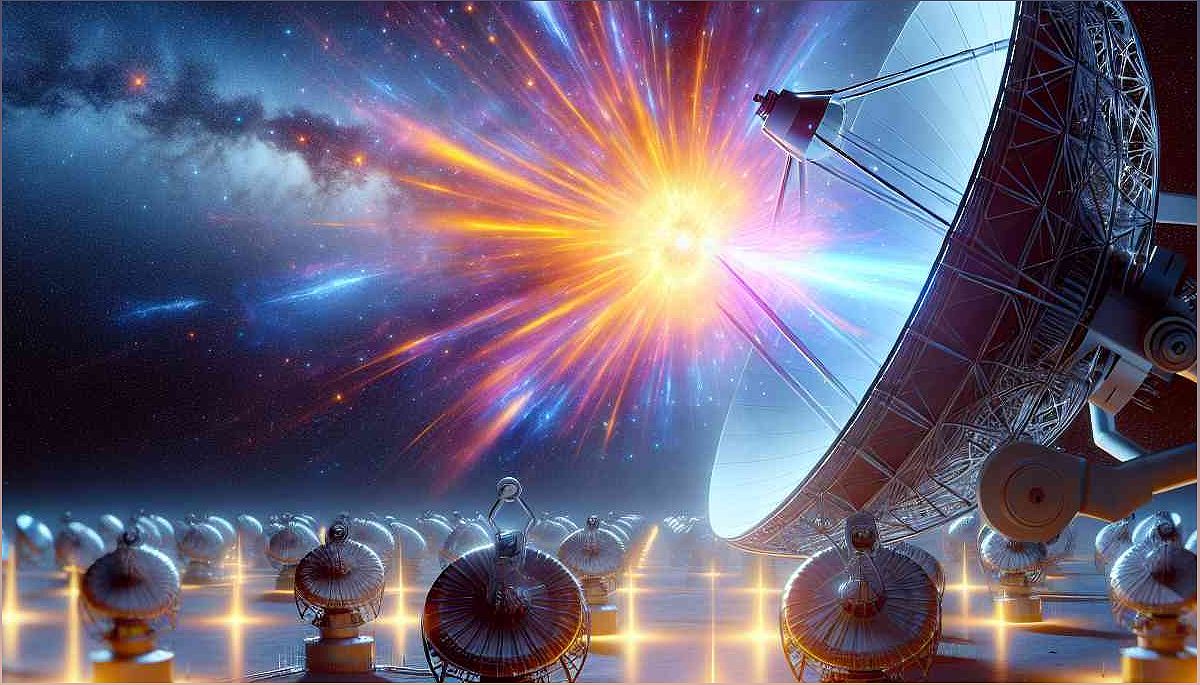In the field of astrophysics, a groundbreaking discovery has been made as the Telescope Array in Utah detected an ultrahigh-energy cosmic ray with an energy level of 244 EeV. This particle, named Amaterasu, has an energy level 36 million times greater than particles accelerated by the Large Hadron Collider at CERN. Join me, John Smith, as we delve into this remarkable finding and explore the mysteries of these ultrahigh-energy cosmic rays.
The Astounding Energy of Amaterasu
Discover the incredible energy level of the cosmic-ray particle Amaterasu and its significance in the field of astrophysics.
Amaterasu, the cosmic-ray particle detected by the Telescope Array in Utah, has an energy level of 244 EeV, surpassing particles accelerated by the Large Hadron Collider at CERN by 36 million times. This groundbreaking discovery opens up new possibilities in astrophysics and challenges our understanding of particle acceleration.
Scientists are astounded by the immense energy of Amaterasu and are eager to unravel its origins. Its energy level is so extraordinary that it raises questions about the limits imposed by the Greisen-Zatsepin-Kuzmin (GZK) cutoff, which predicts energy loss in cosmic rays interacting with cosmic microwave background radiation.
Unraveling the Mystery of Ultrahigh-Energy Cosmic Rays
Explore the enigmatic origins of ultrahigh-energy cosmic rays and the challenges scientists face in tracing them back to their sources.
Ultrahigh-energy cosmic rays (UHECRs) are subatomic particles with energies exceeding 1 EeV. While scientists believe they are formed through violent astrophysical processes, their exact origins remain a mystery.
One of the main challenges in studying UHECRs is their rarity on Earth. Astronomers have benefited from the Greisen-Zatsepin-Kuzmin (GZK) cutoff, which sets an energy limit for cosmic rays traveling long distances. However, the detection of Amaterasu, with its extraordinary energy level, has raised questions about the GZK cutoff and the distance UHECRs can travel.
Various hypotheses have been proposed to explain the origins of UHECRs, including the possibility of new physics beyond the Standard Model and the existence of 'dark accelerators' that emit UHECRs without other forms of radiation. These mysteries continue to captivate astrophysicists worldwide.
Searching for Clues in Astrophysical Objects
Investigate the potential astrophysical objects that could be the source of Amaterasu and the challenges in identifying its origin.
Scientists have proposed several potential astrophysical objects as the origin of Amaterasu, such as the galaxy NGC 6946 known for its intense star formation and supernovae. However, the absence of observed gamma rays or X-rays from this galaxy challenges this explanation.
Another intriguing possibility is that our current understanding of particle physics beyond the Standard Model may be incomplete. It is possible that Amaterasu originated from a location so distant that its electromagnetic emissions cannot be detected by current technology.
Understanding the extragalactic magnetic fields and observing more rare events like Amaterasu are crucial steps in unraveling the mysteries of ultrahigh-energy cosmic rays and their elusive sources.

